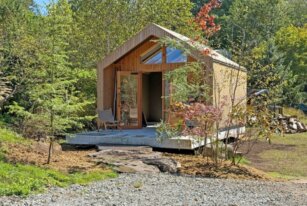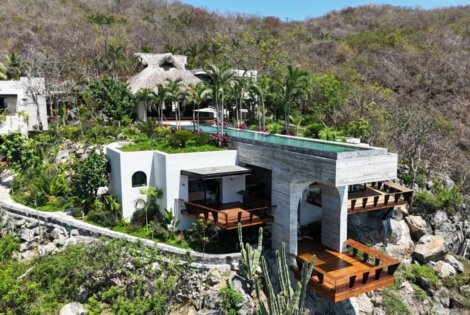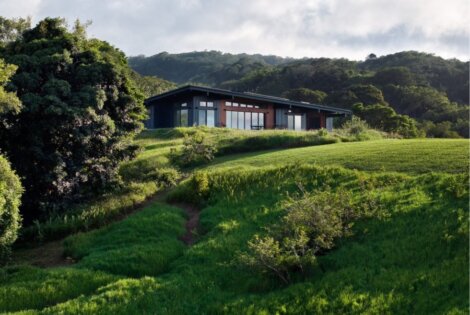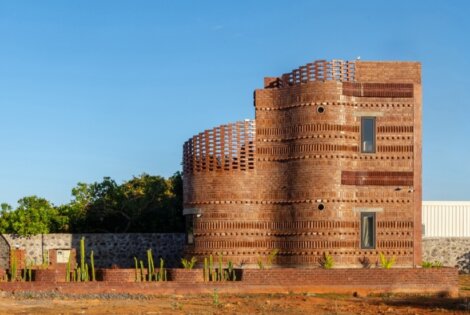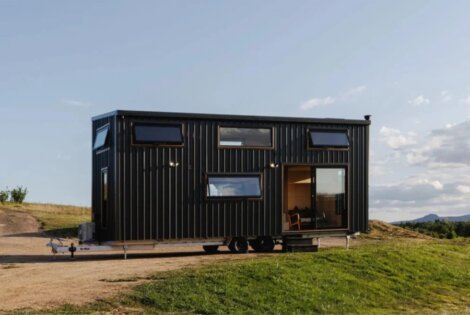F.O.G Architecture adapts Bernard Tschumi’s ‘event space’ theory in the mid-70s to bring new life to the interiors of the upscale fashion brand Xiaozhuo at 758 Julu Road in Shanghai, China. The boutique features sculptural buttons and vibrant stitching details while incorporating the brand’s distinctive red, yellow, purple, and blue colors.
Tschumi’s theory attributes architecture as a dynamic combination of events and space, wherein events can disrupt the balance between the architectural form and its intended functions, which in turn could lead to “de-familiarity.” Taking this in mind, the team used architectural elements that deconstructed the brand’s identity and the garment-making process. Instead, opting for an eventful and recognizable space with aesthetic forms. The outcome is a shop that combines commercial space and public and leisure space.
The architects placed a new glass front facade on Xiaozhuo for natural light to seep inside the store and give urban commuters a glimpse inside the creative space. They also extended the roof from the inside to the outside to create a small pavilion that hosts the seating area positioned near the glass windows.
Then spread across the interior, adding a playful vibe to the space, are fashion elements including colorful stitching on cuffs added to the seating areas and large buttons displayed on the walls and on hanging poles. There’s also a large button-shaped cushioned seat and zipper-shaped handles in the doors of the minimalist fitting room.
To maintain its immersive connection to its surroundings, F.O.G Architecture also installed a grid wall at the entrance of Xiaozhuo. This wall creates a visually mesmerizing play of light and shadow when hit by sunlight. Meanwhile, small square stones paved the floors, and strip lights adorn the gaps in the ceiling for a consistent grid-like visual effect.
Learn More Here

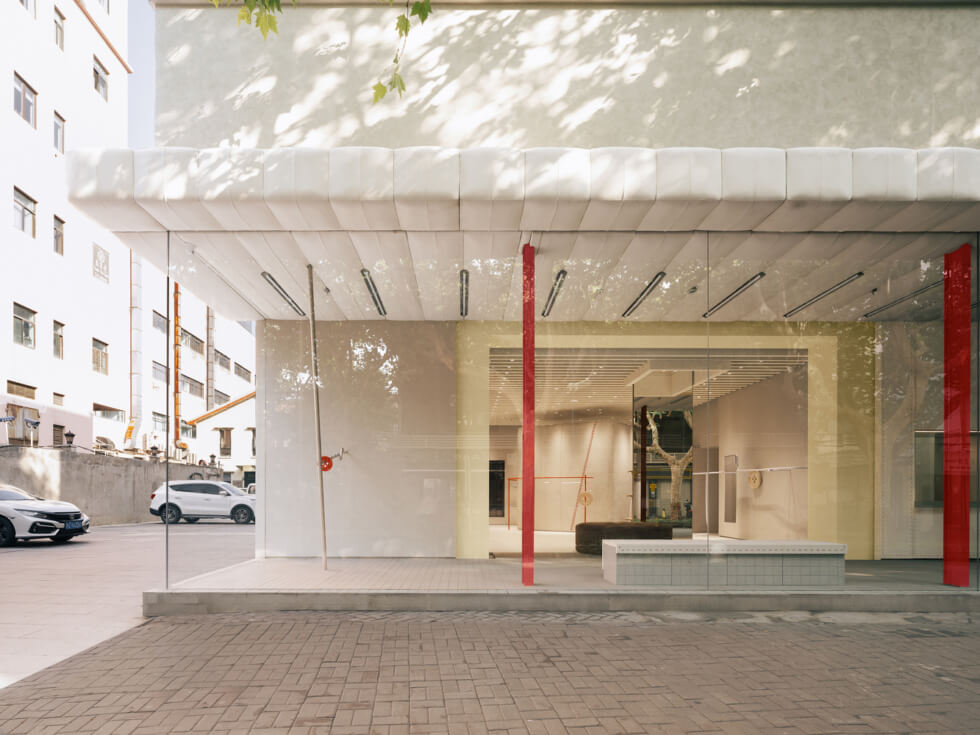

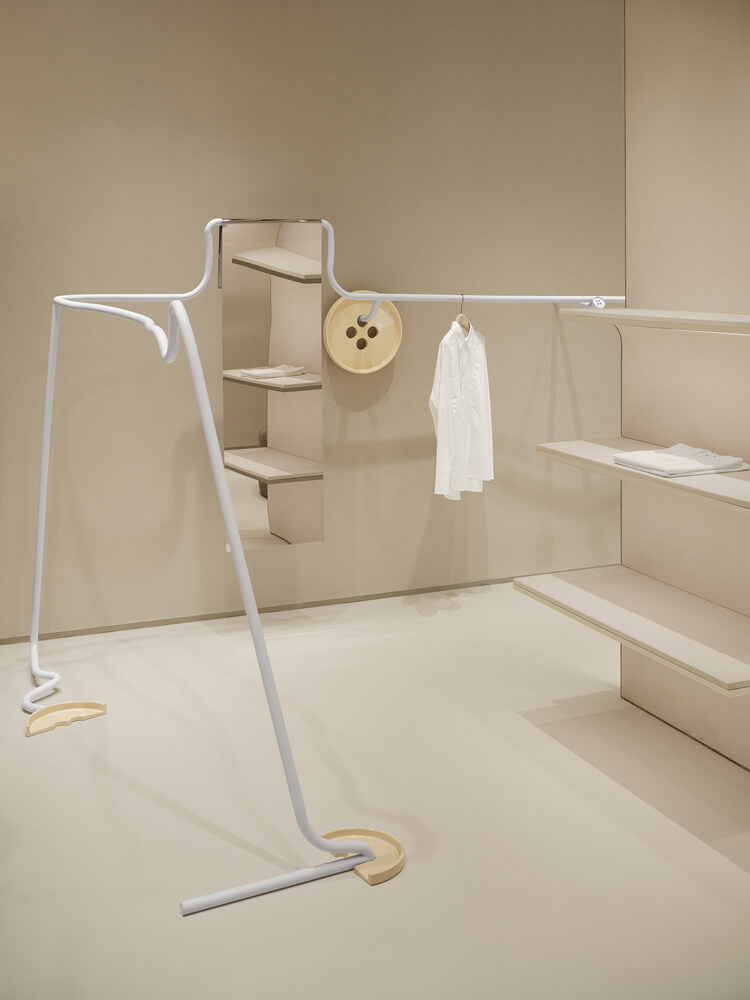

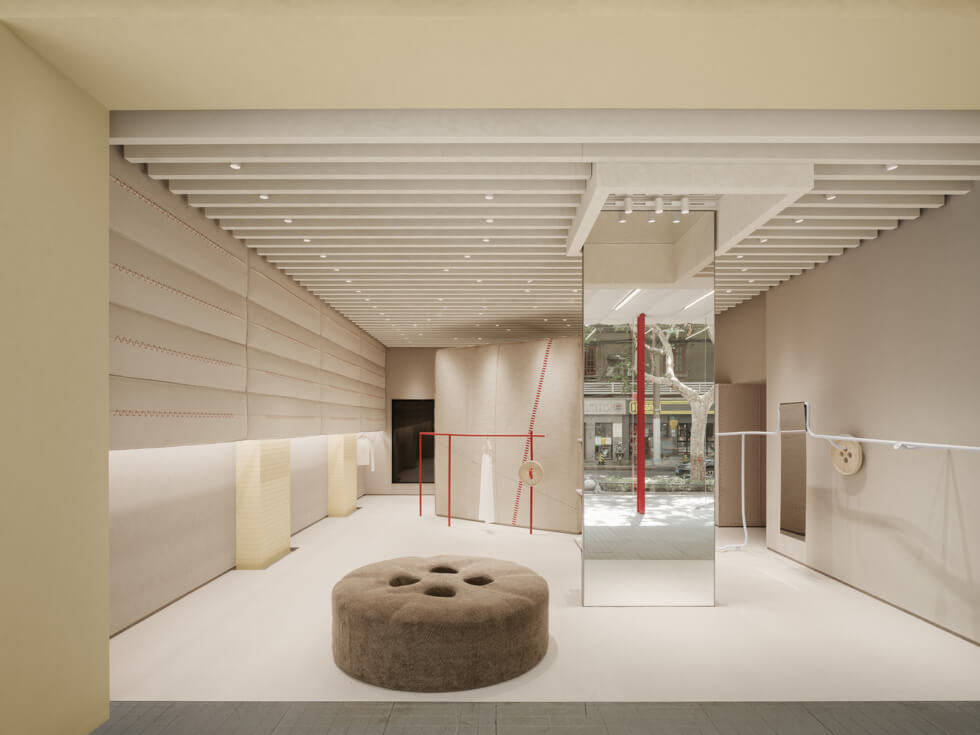
Images courtesy of F.O.G Architecture



